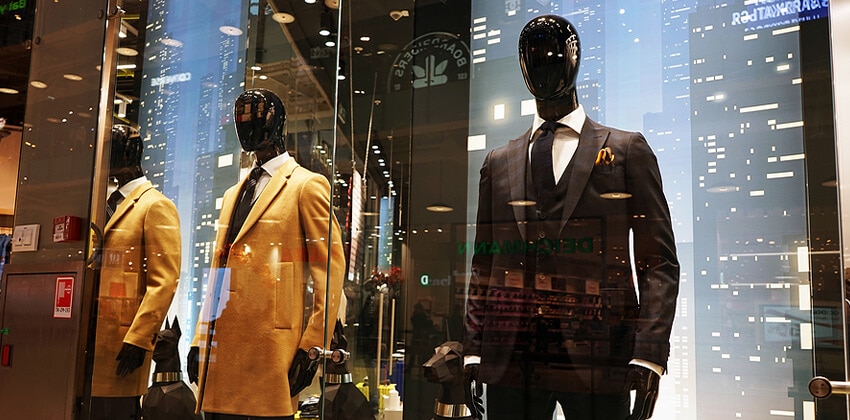
The matter concerning what job seekers should wear on an interview for a professional/office job still causes a great deal of stress and anxiety.
The interview is where and when you want to make the best impression and putting your best foot forward is in every job seeker’s best interest.
In an environment where casual Friday has turned into casual Monday-Friday in many offices, cultural and social diversity are hot topics, and age discrimination is a rising concern.
All contribute to the confusion about “appropriate” attire for a job interview.
Women, whether you opt for the business pants suit or skirt and blazer option depends upon your own personal preferences and comfort level.
[Related: Be Confident for Your Job Interview.]
Job Interview Attire:
First and foremost, a business suit is always appropriate for both men and women no matter what the everyday office attire may be.
-
Formal business suit
Make sure the suit fits and has a clean, crisp, classic look.
Try on your suit well in advance of scheduling any interviews and take time to have it cleaned and pressed. If necessary, go purchase a new suit. If you’re on a budget, borrow one from a friend or buy a nice suit from an upscale thrift store or consignment shop.
For men, a conservative matching tie is best.
For women, choose a solid color that is appropriate for the season and makes you feel confident. Adding jewelry and accessories can add splashes of color and style if you choose to wear a dark suit.
-
Less formal environment
If you truly feel that a business suit is overdoing it, a good rule of thumb is to dress 1-2 steps above the regular dress.
For ladies, this will mean dress pants or a skirt, a nice blouse, perhaps a matching blazer, dress shoes, and a modest amount of jewelry and accessories.
For men, this will mean dress pants, dress shoes, a nicely pressed button down shirt, a matching conservative tie, and maybe a sport coat.
Advertisement
Tattoos and Body Piercings:
Another concern I often hear job seekers express is regarding tattoos or body piercings.
Culturally, ink is becoming more and more acceptable in social settings, and sure, even highly decorated military officers are likely sporting a tattoo of some sort somewhere on their person. I understand and support the idea of individual expression.
But in most professional business settings, it’s usually best to cover up the tattoos and remove body piercings while at work.
-
Pre-interview research
Look online, check with friends who work at the company, or research Internet sites like www.glassdoor.com to see if you can find a company policy on visible tattoos or body piercings.
Be aware that depending upon the company culture, this kind of personal expressionism may be against company policy or could be construed as unprofessional by the person interviewing you.
-
After the job offer
What if I get the job offer? Is it then ok to reveal the ink at work or even a company social event? Again, check company policy.
If there’s no company policy, discreetly ask a trusted colleague, HR representative, or your boss about his/her feelings on the matter. In my opinion, depending upon company culture, err on the conservative side.
Face and Hair:
Several issues around age discrimination arise when it comes to interviews and some of the most common concerns among both men and women are gray hair, hairstyles, glasses, and wrinkles. Men, in particular often wonder about facial hair and male pattern baldness.
-
Hair color and style
The common trend is that a little grey makes you look distinguished, but men and women often wonder if they have too much grey hair. For some roles, like consultant or senior manager, gray hair may be valued as an indicator of experience and maturity.
If it makes you feel more confident to color the gray and die your hair, go for it, but make sure a professional does the work — at least the first time.
Compare a few photos of yourself over the last 5-10 years. If your hairstyle hasn’t changed, perhaps it’s time to talk to your barber or hairdresser about a more modern cut.
-
Glasses
When was the last time you bought new frames? Trends change every couple of years and it doesn’t cost anything to visit an optical shop, browse the frames, and determine if it’s time for an update.
If you’re on a budget, look for special offers, coupons, or go to a discount optical shop.
-
Facial hair
For men, most employers admit, that they prefer clean-shaven. Some companies may even have a clean-shaven policy, so do your homework and check on policies.
If you do insist on facial hair, keep the beard and mustache short and trimmed. Bear in mind that gray facial hair could make you look older, possibly leading to age discrimination.
-
Baldness
You can’t help your mother’s genetics and according to the American Hair Loss Association, by the age of fifty, approximately 85% of men have significantly thinning hair.
The best advice is to avoid the comb-over, embrace your genetics, or just shave your head.
Thinning hair can also be a concern for women, and if you fall into this category, your hairdresser may be able to offer some styling tips or create a customized hairpiece that will blend in with your natural hair.
There are some FDA approved treatment options for both men and women, so speaking with your physician may be helpful.
-
Wrinkles
Women can diminish lines with the right makeup. Are you still wearing the same brand you were 20 years ago? If so, it may be time to make an appointment with a professional makeup artist and review the brand you’re wearing and learn new application tips.
Men and women can also schedule a facial and use over the counter masks to help temporarily tighten the skin. Botox is something to consider, but find a physician who is trained and licensed in using the product if you decide to try it.
It’s always important to make sure that you’re comfortable in your own skin, but marketplace competition is fierce.
The Bottom Line
Take the time to assess your wardrobe and look, plan ahead, and pay attention to the details. What may not seem like a big deal to you, could be the difference between moving forward in the interview process or continuing in your job search journey.
More About Job Interviews
- Smart Strategies to Answer to Behavioral Interview Questions
- Interview Success Secret: Smart Listening!
- Ace Your Job Interview: 5 Ways to Build Rapport with the Interviewers
- Job Interview Success Secret: Your Relevant Stories
- How to Leverage Body Language in Interviews
- 3 Steps to Interview Success: Build Your Interview Checklist
- Guide to Successful Job Interviews
About the author…
Beth Colley CEO/owner of Chesapeake Career Management Services has guided over 1,200 job seekers to career success since joining the careers industry in January of 2000. She is a Certified Master Resume Writer, a Certified Career Management Coach, and a Certified Brain Based Success Coach and an active member of Career Directors International, The National Resume Writers Association, and Career Thought Leaders.
Don't forget to share this article with friends!




